Does a Vegan diet mess up Facial Bones and make kids unattractive? (Patreon)
Downloads
Content
About 5 months ago I released a video titled Vegan diets don’t work. Here’s why
<figure> </figure>
</figure>A friend was asking me about a particular section of Mic the Vegan’s video response to my video so I’ll share my thoughts on that part here. This also ties nicely into a topic that I’ve been really into lately: how improperly formed mouth, teeth and jaws can worsen sleep quality and even worsen posture, lead to muscoskeletal issues and even lower power output in the gym.
<figure> </figure>
</figure>In my vegan video, I explain that the fat-soluble vitamins A, D and K2 work together to transport calcium and other minerals to ensure the proper formation of the bones. Weston A. Price alleged in his 1939 book Nutrition and Physical Degeneration that a key reason traditional diets afforded people much better facial and dental development (straight teeth, broad jaws, excellent sleep-affording airways) was because these diets had far more fat-soluble vitamins than the modern diets that were spreading at the time. Often, the traditional diets offered 10 times more the fat-soluble vitamins of the modern diets as well as much more minerals.
<figure> </figure>
</figure>To keep this post from being way longer than it already is, we’ll just focus on the fat soluble vitamin D, which is primarily found in animal foods (or supplements). Some light digging revealed 20 studies highlighting the well-known fact that getting enough vitamin D is a challenge for vegans so they need to be vigilant with supplementation.[1,2,3,4,5,6,7,8,9,10,11,12,13,14,15,16,17,18,19,20] Further, 5 different studies specifically show that a vegan diet negatively affects bone health in adults and children.[1,2,3,4,5]
With that in mind, let’s take a look at Mic the Vegan’s comments on facial development in response to my video.
<figure> </figure>
</figure>Mic the Vegan (5:16): “To summarize, he then says that the traditionally eaten animal product vitamins were actually what allowed people to form proper jaw structure and have enough room for their teeth. But by this logic, as these people switch to a more modern diet, wouldn't their bones also have malformations? All over their body. Like, wouldn't they have crooked, rickets like legs because they didn't have enough vitamins to form proper bone structure? They didn't.”
Mic is missing the point that we can expect sliding scale of negative effects that come from having suboptimal levels of nutrition. That is, as you progressively reduce the nutrition, you should get progressively worse development.
Obviously there is a fuzzy threshold of vitamin D deficiency that has to be passed to be classified as having rickets. Just like there is a spectrum of rickets (i.e. mild to awful) and you can have a mild vitamin D deficiency or an extreme deficiency, why shouldn’t we expect the body to respond differently to optimal nutrition than just-barely-good-enough nutrition?*
Of course there is a point where you hit ‘optimal’ nutrition and increasing the vitamin intake past that point won’t provide any more benefits. DJ Qualls can’t just stuff his kid with cod, goose and beef livers and expect him to grow up to have the jaw structure of an 1800’s Native American.
<figure> </figure><figure>
</figure><figure> </figure>
</figure>Mic’s saying ‘why didn’t the modern diet cause awfully malformed bones?’ isn’t too different from saying :
・If caffeine makes people more anxious, why aren’t coffee drinkers in a psych ward?
・If sugar is actually bad for the teeth, how come I still have teeth?
・If alcohol is so bad for you, how come I’m not dead?
Actually, on this note, the first time I started noticing bowed legs was when I was in Japan. It wasn’t until after a couple dates with one woman that I noticed that her legs were slightly bowed. Honestly, I probably wouldn’t have noticed if she didn’t compliment my ‘straight’ legs.
<figure> </figure>
</figure>A 2018 study concerned about the prevalence of vitamin D deficiency in children in Japan found the prevalence of symptomatic vitamin D deficiency to be 3.5 out of 100,000 children. Investigating 89 children with D deficiency, 83% had bowed legs, 88% were exclusively breastfed, 49% had a poor diet and 31% had insufficient sun exposure. Considering 88% of them were breastfed but only 49% and 31% had poor diet and/or insufficient sun exposure, the mother’s health and nutrition is obviously very important for whether or not these children would develop improperly formed leg bones or not.
However, children with hypovitaminosis D do not always exhibit symptoms or signs associated with vitamin D deficiency.
I emphasized the word ‘symptomatic’ because physicians don’t consider a slightly too small upper jaw bone (maxilla) that leads to airway issues later in life as ‘pathological.’ Remember that because this will be important later. By the way, I doubt that that woman’s only slightly bowed legs would have even been considered ‘symptomatic.’
<figure> </figure>
</figure>Mic the Vegan (5:40): “But what I don't think he looked at is what modern scientists actually have to say about why our teeth got crooked and jaws got smaller. One example is this 2020 paper in Oxford Academics Bioscience journal mentioning that, based on previous research, the effect of loading bone with heavier mastication or chewing appears to directly affect the density and size of these facial structures and that food consistency determines facial development, suggesting that a diet with harder textures enhances bone and muscle growth.”
Let me note that while Mic says ‘food consistency determines facial development,’ the paper he cites doesn’t speak so strongly - it only says that food consistency has an “effect” on orofacial development. I highlight this because it seems Mic is arguing that heavy mastication is the major or only determinant of facial development (aside from genes), especially since his point is to discount my assertions about the importance of fat-soluble vitamins for facial bone development.
So let’s take a look at why we should expect optimal nutrition to have different effects on facial development from just-barely-good-enough nutrition. This is very important point because the development of facial bones affects attractiveness, straightness of the teeth and often affects sleep quality and even athletic performance.
If Mic said ‘OK Sure fat-soluble vitamins are very important for facial bone development, but Joseph should have also talked about chewing force,’ then I wouldn’t be writing this post.
<figure>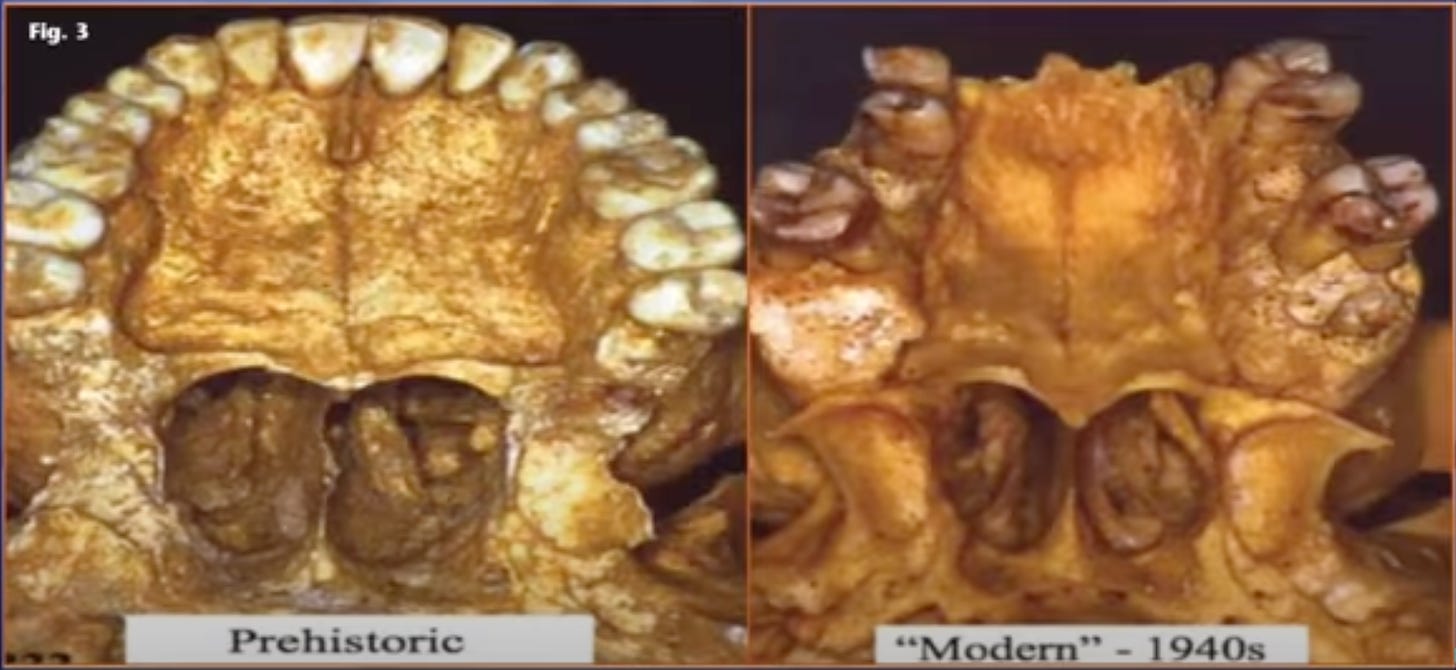 </figure><figure>
</figure><figure>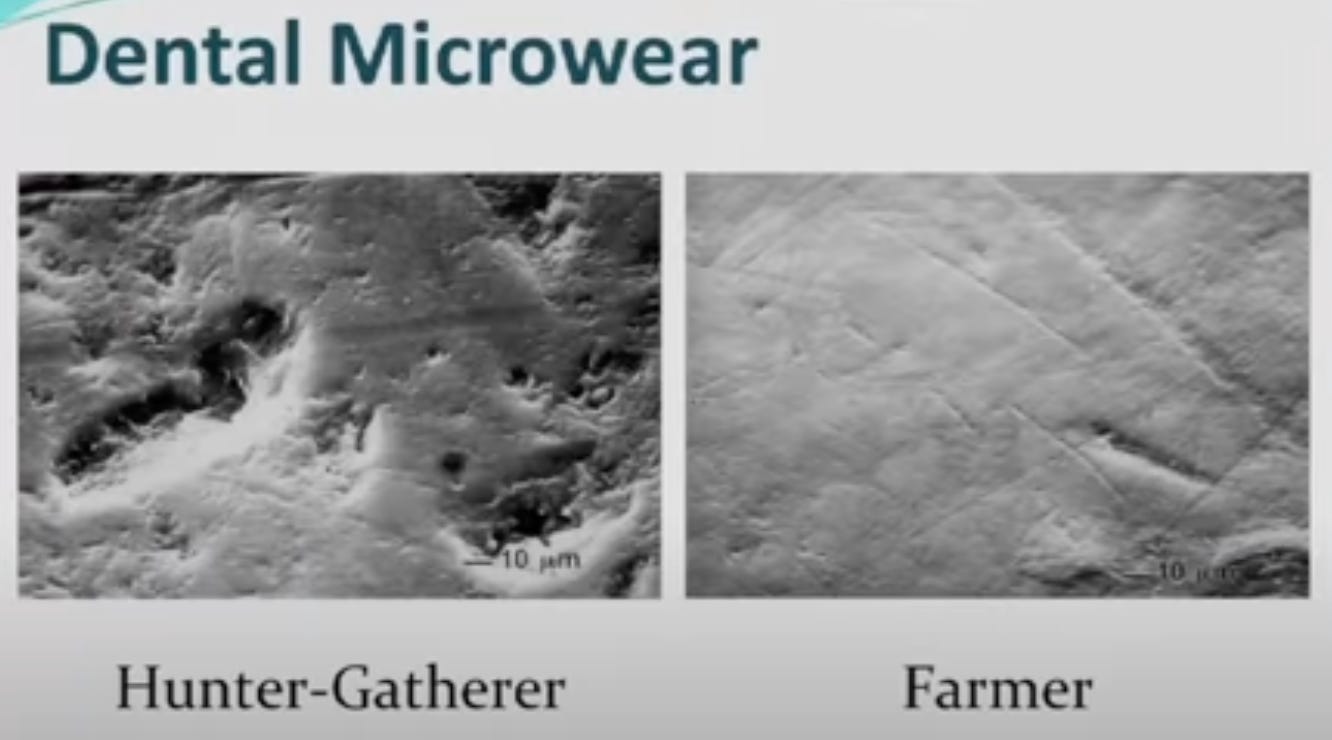 </figure>
</figure>The concept of mastication affecting the facial bones was extensively covered in my 2019 video focused on the work of John and Mike Mew. The mastication force Mic is referring to is a core concept Dr. Mike Mew espouses for better facial development.
<figure>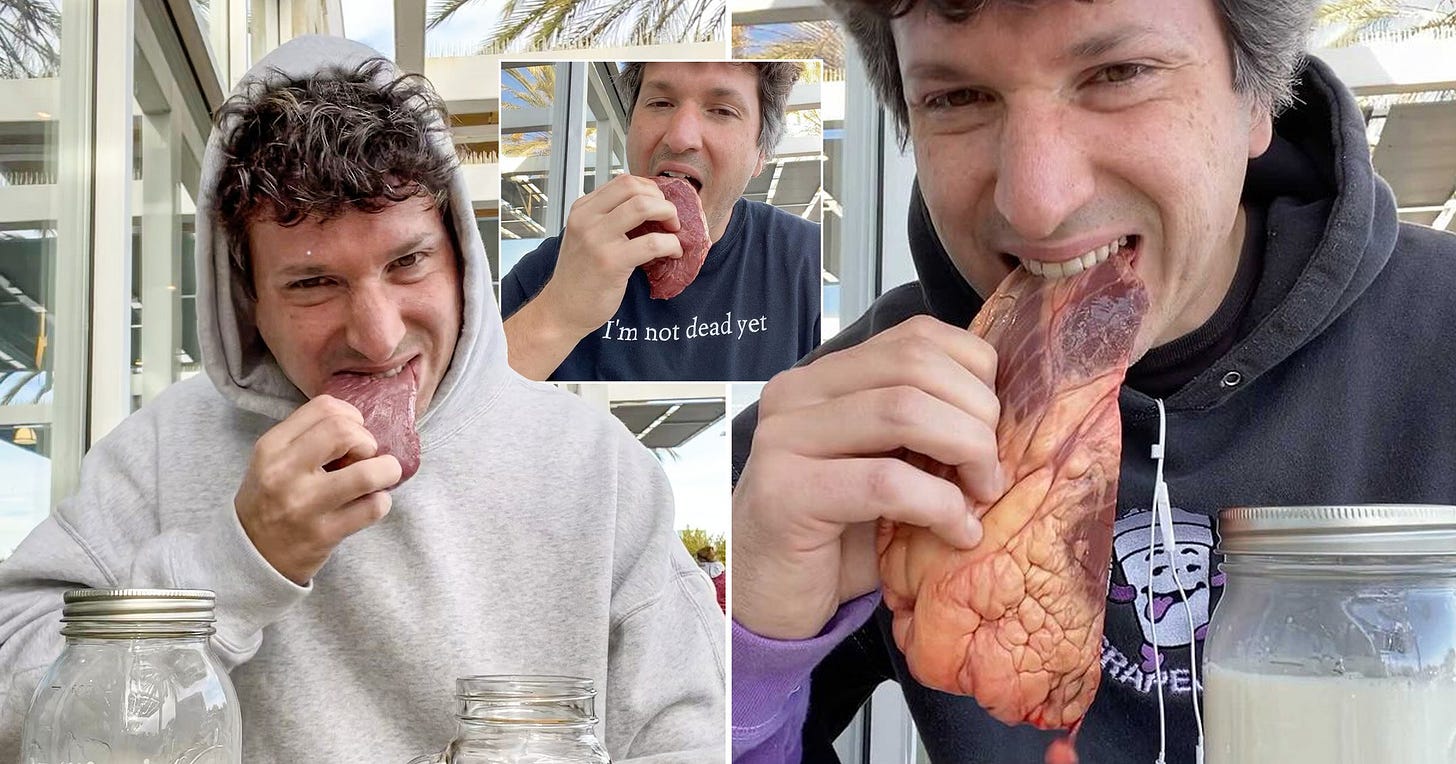 </figure>
</figure>So, of course I think oral posture and chewing are very important for orofacial development. Ironically, mastication force affecting orofacial development is another point against veganism.
What’s the hardest plant food you can think of? Maybe some almonds, a thick carrot or a turnip? Go eat some of those, then buy a big hunk of beef ribeye and slice off a steak yourself that still has a bit of the ilverskin and connective tissue. (If you buy a single ribeye steak, the butcher will trim off the chewy bits) After you slice off a manageable chunk, try eating that raw without a knife and tell me whether that or a carrot requires more chewing force. You can also try eating stewed chicken bones including the cartilage around the joints.
<figure>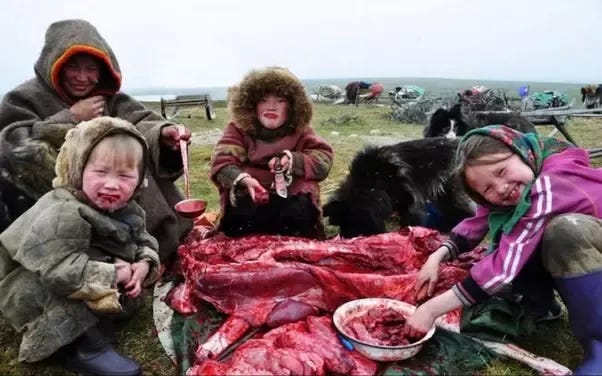 </figure>
</figure>Here’s the thing: Why should we assume mastication to be the only determinant of facial development?
Facial structure is going to be a combination* of
(1) genes
(2) nutrition and health of the mother during pregnancy
(3) nutrition and health of the child during developmental years
(4) mastication/oral posture.
That is, I’m not sure why Mic thinks that because there’s evidence chewing is important for facial development that nutrition isn’t also a major factor in development of the facial bones. Evidence for one doesn’t nullify the other.
By the way I’m sure Mic acknowledges outright nutritional deficiencies can affect facial bone development, but I think he’s trying to say something like as long as you’re not so nutritionally deficient that your leg bones for example aren’t getting deformed, nutrition is not a determinant of facial structure.
But why shouldn’t we expect optimal nutrition to offer optimal development and just sufficient nutrition to offer just good enough development?
It’s well known that weight-bearing activities increase bone density in the legs. …It’s also well known that nutrition has a huge effect on leg bone density. No one would try to argue that nutrition isn’t important for bone density because some research found weight-bearing activities to have an effect on bone density.
*By the way, I would add a (4) fourth factor: nutrition and health of the grandmother.
<figure> </figure><figure>
</figure><figure> </figure>
</figure>In the video, I brought up the example of these two (above) brothers. The one with straight teeth and better facial features was raised on a traditional diet, the one with crooked teeth and less desirable facial features raised on a modern diet.
I agree mastication force is very important for facial development, but the traditional diet of the Outer Hebrides doesn’t sound like it contains very hard foods.
“Their nutrition is provided by their oat products and fish, and by a very limited amount of vegetable foods. Lobsters and flat fish are a very important part of their foods. Fruits are practically unknown.”
The Weston A. Price book presents many more examples of families where one child on traditional foods had excellent facial features and another child on modern foods did not.
<figure> </figure>
</figure>Do you think Christopher Reeve simply chewed his way into these facial features? Or, is it more likely a combination of: his genes, his parents’ health and nutrition, his health and nutrition during his developmental years, and his mastication during his developmental years?
Better bones for better sleep
<figure>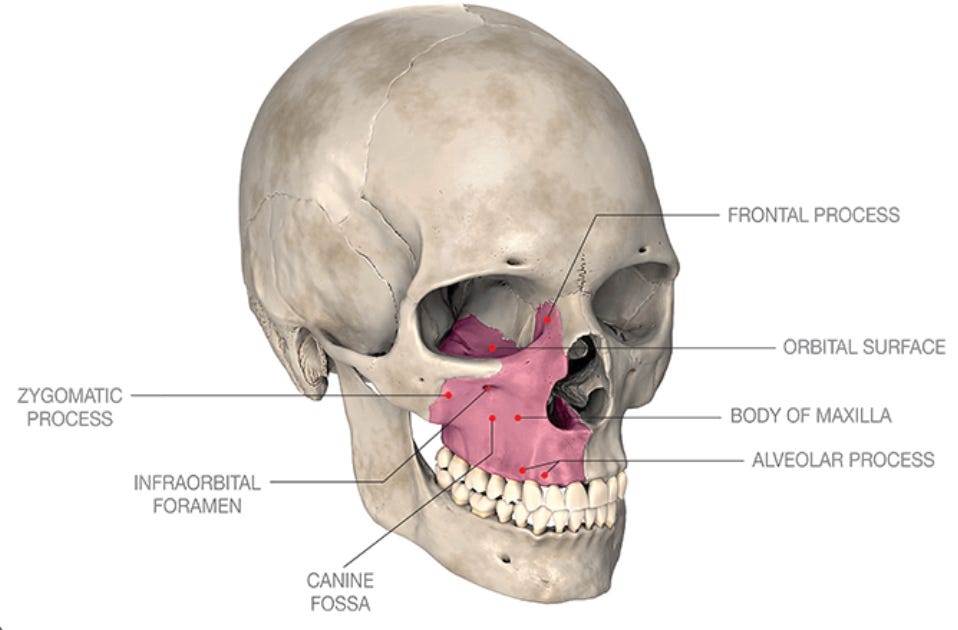 </figure><figure>Maxilla
</figure><figure>Maxilla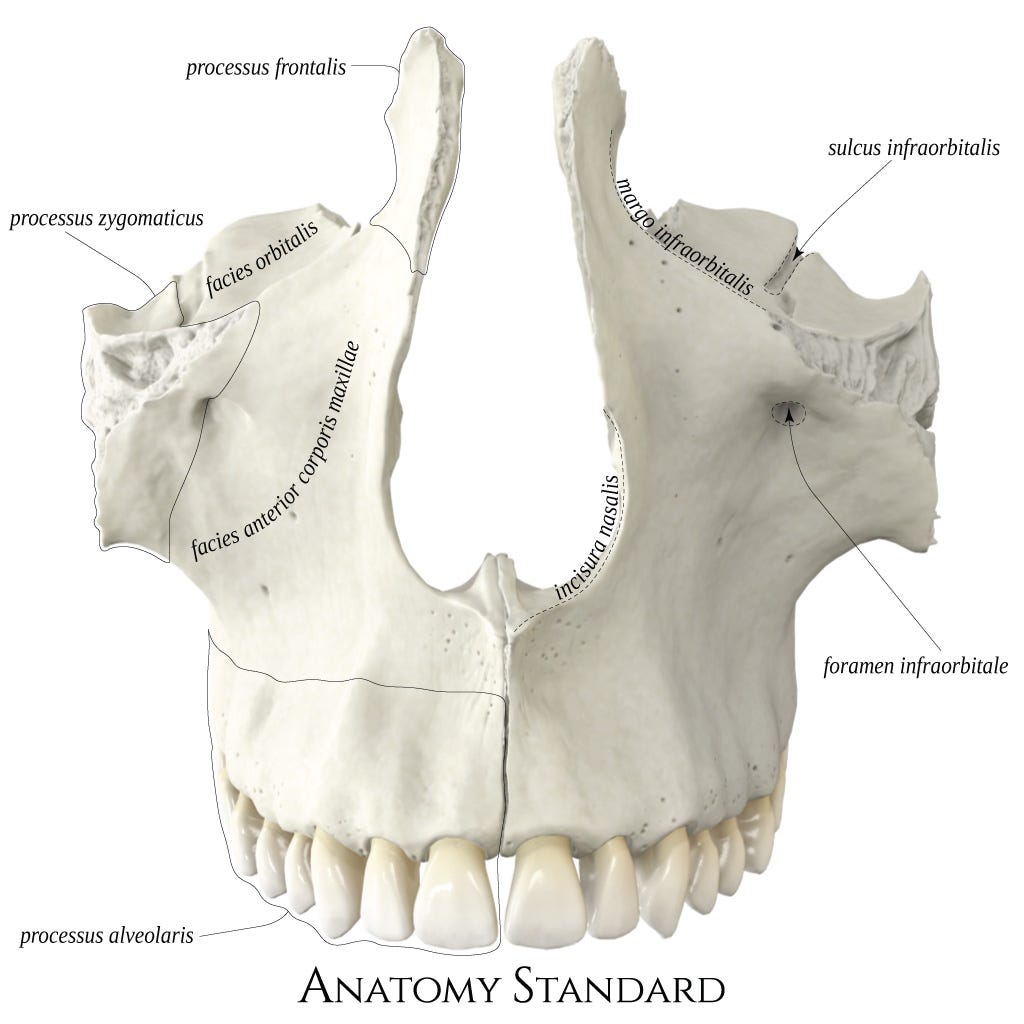 </figure>
</figure>The maxilla is the bone of the upper jaw, the bone of the mid-face. A small maxilla will lead to crowded teeth because there won’t be enough room for the teeth (as explained in my video). Because the maxilla literally decides the volume of your airway, an underdeveloped maxilla will lead to snoring or sleep apnea, which will slowly chip away at your health each night.
Since fat-soluble vitamins are so important to bone development in general, I think it’s tall order to argue that they’re not important for the development of the facial bones.
After all, what are rickets?
Rickets refers to improper development of the leg bones due to insufficient nutrition.
If someone has a small maxilla that does not allow for enough room for the teeth nor allow for optimal airflow, wouldn’t you call that improper development of the maxilla?
So is there any chance that improper development of the maxilla is in part due to insufficient nutrition?
Well, that’s exactly what the 2021 paper Could Vitamin D3 Deficiency Influence Malocclusion Development? suggested. The study found that 46.5% of patients with a vitamin D deficiency had crooked teeth and 30% of them experienced improper development of the maxilla - it was too narrow.
The paper concluded that:
“VD3 deficiency could be one of an important factor influencing maxillary development.”
Further, the authors point out in that paper that “other authors believe that prenatal vitamin D status appears to affect postnatal mineral homeostasis and may influence growth.” Which ties into what I was saying about your mother’s health affecting the formation of your bones in general as well as your facial bones. As mentioned in my video, pregnant women on traditional diets were often given priority access to fat-soluble vitamin rich foods. They also point out in that study the probably obvious fact that “postnatal vitamin D status is fundamental to mineral homeostasis and may affect subsequent bone mass.”
This study Prenatal and infant predictors of bone health: the influence of vitamin D notes that vitamin D deficiency leads to “eventual alterations in bone shape” and, “in the longer term, lack of vitamin D supplementation may result in reduced bone size and mass during childhood.” So could it affect the size of the maxilla bone?
<figure>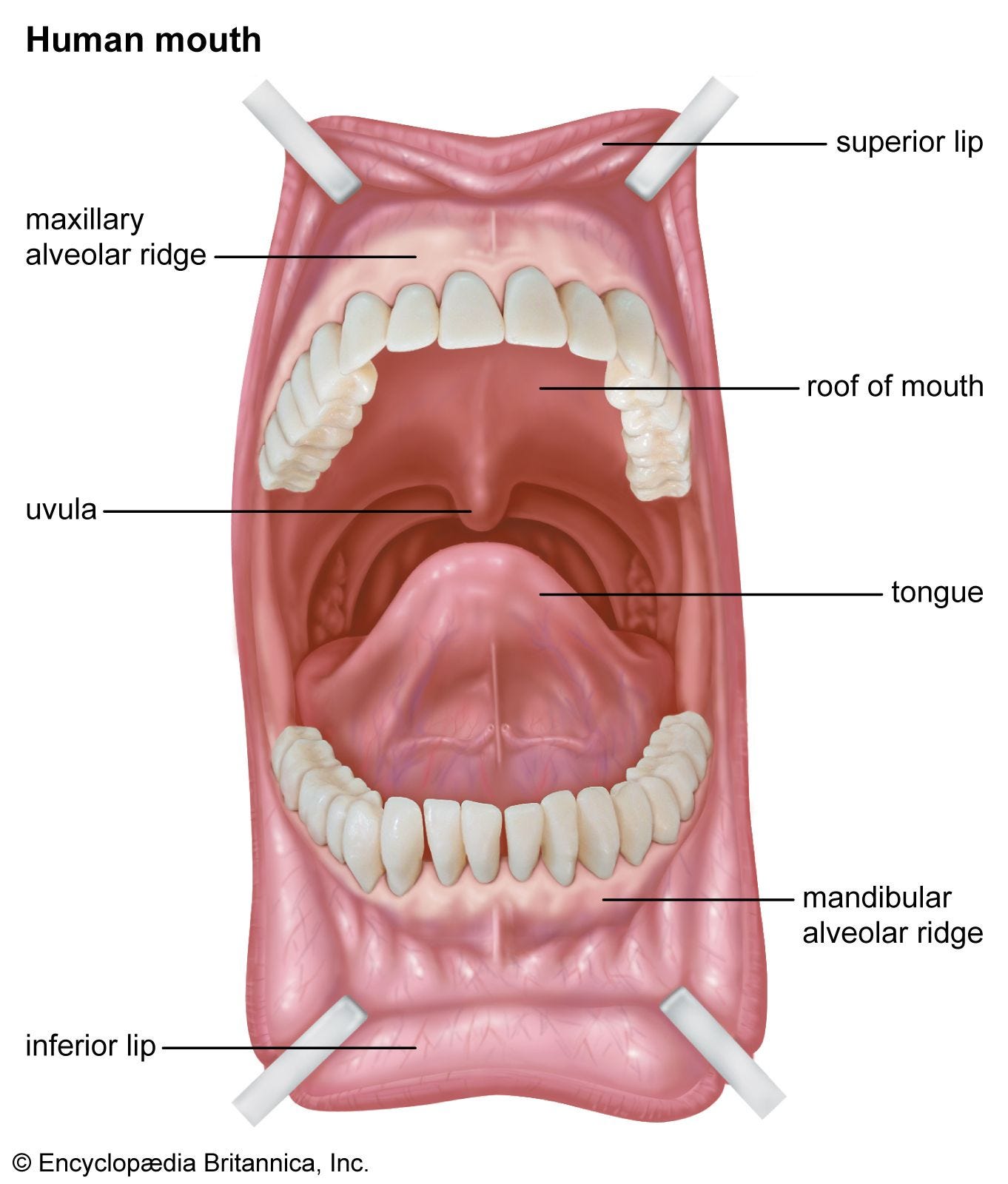 </figure>
</figure>Another 2004 study looking at the facial bones in mice asserted that their “data show that Vitamin D and calcium status may control the formation of dental alveolar bone,” the jaw bone.
A paper on vitamin D and orthodontics explains that “laboratory studies have revealed some evidence that vitamin D enhances tooth movement and the stability of the tooth position.” Remember that braces work by the jaw bones doing slight remodeling in response to constant force on the teeth. So, as discussed in my 2019 video, chewing force can affect the facial bones and whether the position of the teeth, helping them to straighten out. And this paper is saying that vitamin D, a fat soluble vitamin, enhances the tooth’s ability to move into a better position and stabilize in that position.
<figure>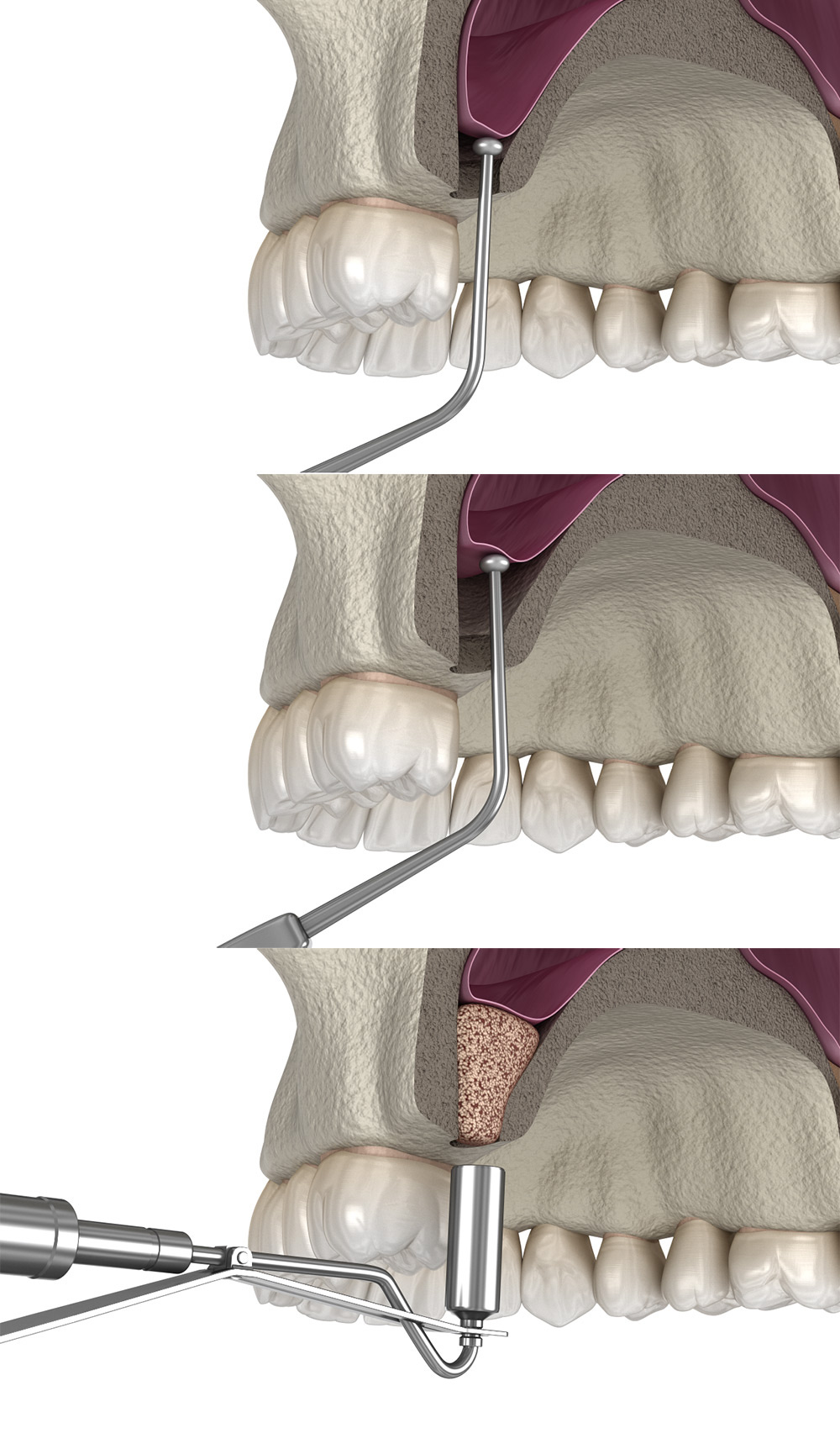 </figure>
</figure>A maxillary sinus augmentation is a kind of wild procedure where bone is grafted into the back part of the maxilla to increase the height of the sinuses. This 2015 randomized, double-blind, placebo-controlled clinical investigation on 10 patients wanted to see whether oral supplementation with vitamin D3 (5000 IU) combined with calcium (600 mg) impacts bone formation and remodeling after this procedure. They found that “a significant association was found between increased vitamin D levels and number of bone-resorbing osteoclasts around graft particles suggesting that local bone remodeling might be more pronounced when serum vitamin D levels were improved.”
<figure> </figure>
</figure>This 2019 case report was kind of interesting: The author identified vitamin D deficiency as a culprit behind poor outcomes after double jaw surgery.
I realize these dental surgeries are drifting far from the point that fat soluble vitamins are an important component of facial bone development. However, the point is that as you’d expect, vitamin D is very important for bone development and of course the development of the facial bones.
The earlier mentioned 2021 paper on vitamin D affecting maxilla size also notes the unfortunate fact that scientific publications investigating these types of things are limited and that most studies only investigate vitamin D’s affect on obviously pathological states like gingivitis or periodontitis. The fact is, a small maxilla is not typical considered pathological by the medical or scientific community, even though it will likely lead to crooked teeth and airway issues.
Less severe airway issues may be cloaked for years by the vitality that youth affords. So people with an improperly developed maxilla may not even suspect there could be an issue with the airway until they’re in their late-twenties and wondering why they feel still feel like crap after sleeping 8 or 9 hours. They would also need to go down the right rabbit holes to realize two incredibly simple concepts:
(1) The body and brain need a lot of air to function optimally.
(2) A small airway does not afford optimal airflow.
While we’re on the topic of bones, let’s take a look at Mic’s response to the point in my video about dairy intake correlating with increases in height.
Milk makes you tall with robust bones but causes cancer?
<figure> </figure>
</figure>Mic refers to the portion of my video where I say: “A study of 105 countries in the Journal of Economics and Human Biology noted that animal food, particularly dairy, most correlated with increases in height.”
Mic the Vegan (9:47): “Quick reminder that 70% of planet Earth is lactose intolerant.”
Whether the lactose in dairy is poorly digested or not does not change the fact that this study found that dairy most correlated with increases in height. Whether the Dutch are gassy or not, they’re still getting plenty of vitamins from dairy and they are very tall.
Mic the Vegan (continued): “Anyway, this sounds nice. OOH, [milk makes you tall] but the result is likely due to IGF-1 and how dairy raises it because it has IGF-1 and stimulates IGF-1 production as well. IGF-1 fuels every stage of cancer growth and spreading, and high IGF-1 means more height, and height is unfortunately associated with more cancer across the board. Really. As this paper states, the association between taller stature and higher risk of many cancers is remarkably robust. … That's probably why this study on 9000 men found that drinking milk every day in adolescence led to a 320% risk of getting prostate cancer. ”
Indeed, IGF-1 plays an important role in growth in general as well as the growth spurt observed during puberty.(S) OK … so… is his argument that you shouldn’t drink milk so you can be short but maybe have a lower risk for cancer later in life? I wonder how many kids or parents would take that tradeoff. As we’ll see, this kids drinking milk causes cancer idea doesn’t really pan out anyways.
So while Mic says “IGF-1 fuels every stage of cancer growth,” we should also note that IGF-1 fuels non-pathological growth in general.
Pathologizing the growth factor IGF-1 reminds me a lot of pathologizing the major regulator of growth, mTOR. I’ve talked in another article about how David Sinclair has popularized this idea that eating less protein will reduce mTOR activation and allow people to live longer. Restricting protein to reduce mTOR activation is a recipe for frailty and ironically, poor health especially in old age.
Eating Less Protein won't make you Live Longer
I explain in this video of mine how Dr. Valter Longo explains that the increase in IGF-1 after its decline during fasting is what ‘turns on’ stem cells and the reparative effects seen from refeeding after fast.
"The generation of healthy cells is IGF-1 dependent. There is no doubt that when you refeed you have to have sufficient protein to rebuild." -Valter Longo
Here are some other points about IGF-1:
・IGF-1 stimulates muscle protein synthesis.
・IGF-1 inhibits muscle protein breakdown.(S)
・IGF-1 is thought to be “a central mediator in the cellular pathways associated with muscle hypertrophy.”(S)
・IGF-1 is associated with better leg muscle function in the elderly. (S)
・IGF-1 is significantly correlated with (patient reported) sexual function. (S)
・IGF-1 has been shown to stimulate testosterone production by testicular cells. (S)
・IGF-1 plays a role in growing bone.(S)
By the way, exercise increases IGF-1. So… should we not exercise so we don’t get cancer? IGF-1 is a very complex factor and it’s well known to be influenced by anything from genetic make-up, time of day, age, sex, exercise status, stress levels, nutrition level, body mass index (BMI), estrogen status and xenobiotic intake.
This is all very similar to the arguments for lowering mTOR to live longer. Reducing growth signals leads to more frailty, which we know reduces lifespan, yet people are still saying reducing mTOR via protein restriction is good for longevity because it will theoretically improve lifespan in humans based on animal experiments in the lab. If you’re interested, take a look at my above article Eating Less Protein won’t make you Live Longer as this IGF-1 discussion maps right onto the mTOR discussion.
Even with all that mind, this ‘kids drinking milk causes cancer’ idea is not anywhere as strong as Mic makes it out to be.
First, the ‘drinking milk as a kid causes prostate cancer when you’re an adult’ study he’s referring to two glaring weaknesses.
・Milk consumption was tracked based on a rudimentary questionnaire.
・They did not ask specifically how much milk people had, but just asked them whether they had “milk in adolescence more than once a day.”
More importantly, a 2022 meta-analysis titled Milk Intake in Early Life and Later Cancer Risk notes that they conducted their meta-analysis because:
“Calcium and IGF-1 in dairy products play critical roles in development and growth during childhood and adolescence [12], and several studies have investigated how dairy intake in early life relates to cancer risk [2,11,13,14,15,16,17,18,19,20,21,22,23,24,25,26,27]. However, the results are inconsistent, and no meta-analysis has been conducted yet.”*
*[15] is the study Mic the Vegan referenced.
While they acknowledge that there are compounds in milk thought to influence prostate cancer, they note specifically that “high dairy intake in early life was not associated with later prostate cancer risk in our study.” This is based on data from multiple studies, including the one Mic cited.
They in fact note a study where milk is found to be protective against breast cancer:
“With regard to breast cancer risk, out of the seven studies included in our meta-analysis, six studies [2,19,22,23,25,26] were conducted in western countries, most of which found no evidence of a significant relationship. In contrast, the remaining study [27] was conducted in China and it observed a significantly reduced risk of breast cancer in relation to a higher milk intake in early life.”
Lastly, there are many studies showing the health benefits of dairy consumption, including bone health and a potential reduction in the risk of other types of cancers and cardiovascular disease.
From a 2022 meta-analysis:
“In conclusion, the present meta-analysis of 52 cohort studies indicated that total dairy, milk, and yogurt intakes were associated with a lower risk of overweight or obesity, with similar results for total dairy, low-fat dairy, and milk intakes for hypertension and total dairy and yogurt intakes for T2DM.”
From a 2021 meta-analysis:
“We identified 41 meta-analyses with 45 unique outcomes ... According to the existing evidence, milk consumption was more often associated with benefits than harm to a sequence of health-related outcomes.”
Further, on cancer:
“High milk intake was consistently related to decreased risk of colorectal cancer (CRC) (0.82, 0.76–0.88) [38]. The meta-analysis with 1,003,303 subjects showed that the highest milk intake was connected with a lower risk of both colon and rectal cancer, especially in colon cancer (0.79; 0.72–0.87) [38]”
Lastly, even if taller stature may be associated with an increased risk of certain cancers, it's also linked to lower risks of other conditions such as heart disease (S). With that in mind, it seems being taller would be better considering heart disease is the leading cause of death worldwide (S). In any case, it goes back to my earlier point that Mic is essentially saying that veganism is good because it will make you shorter and might reduce your chance of getting cancer later in life. I don’t many people would take that tradeoff.